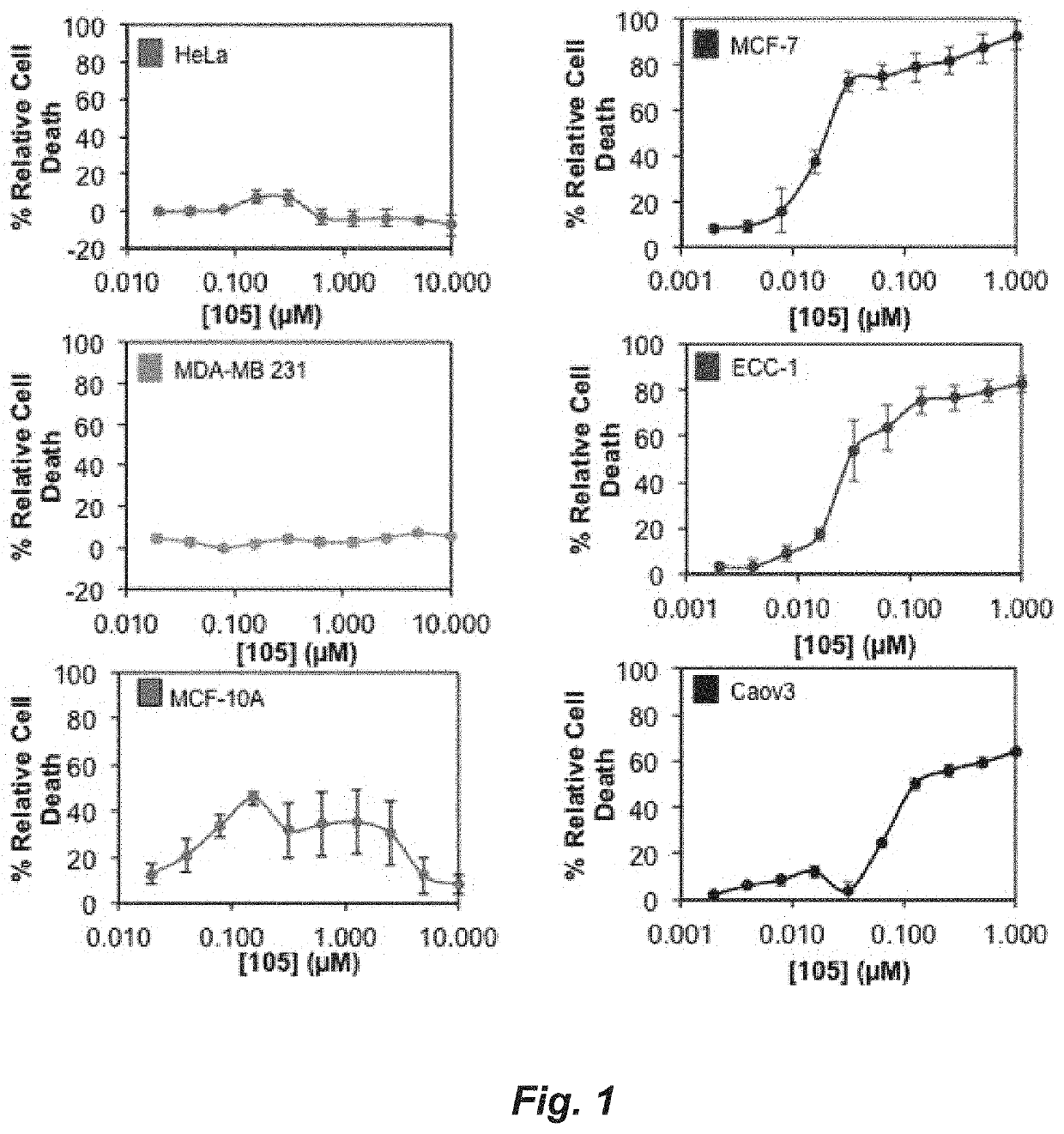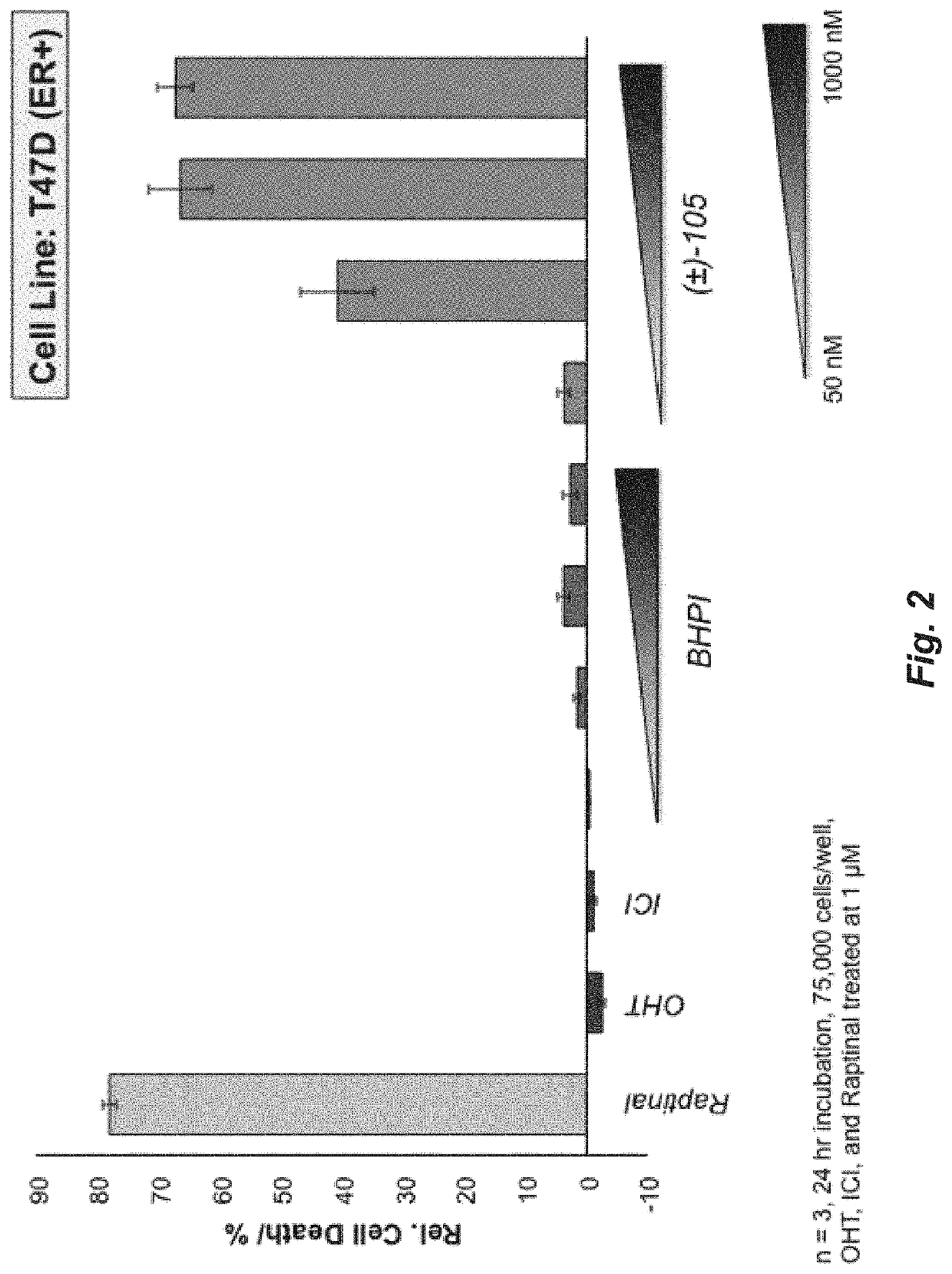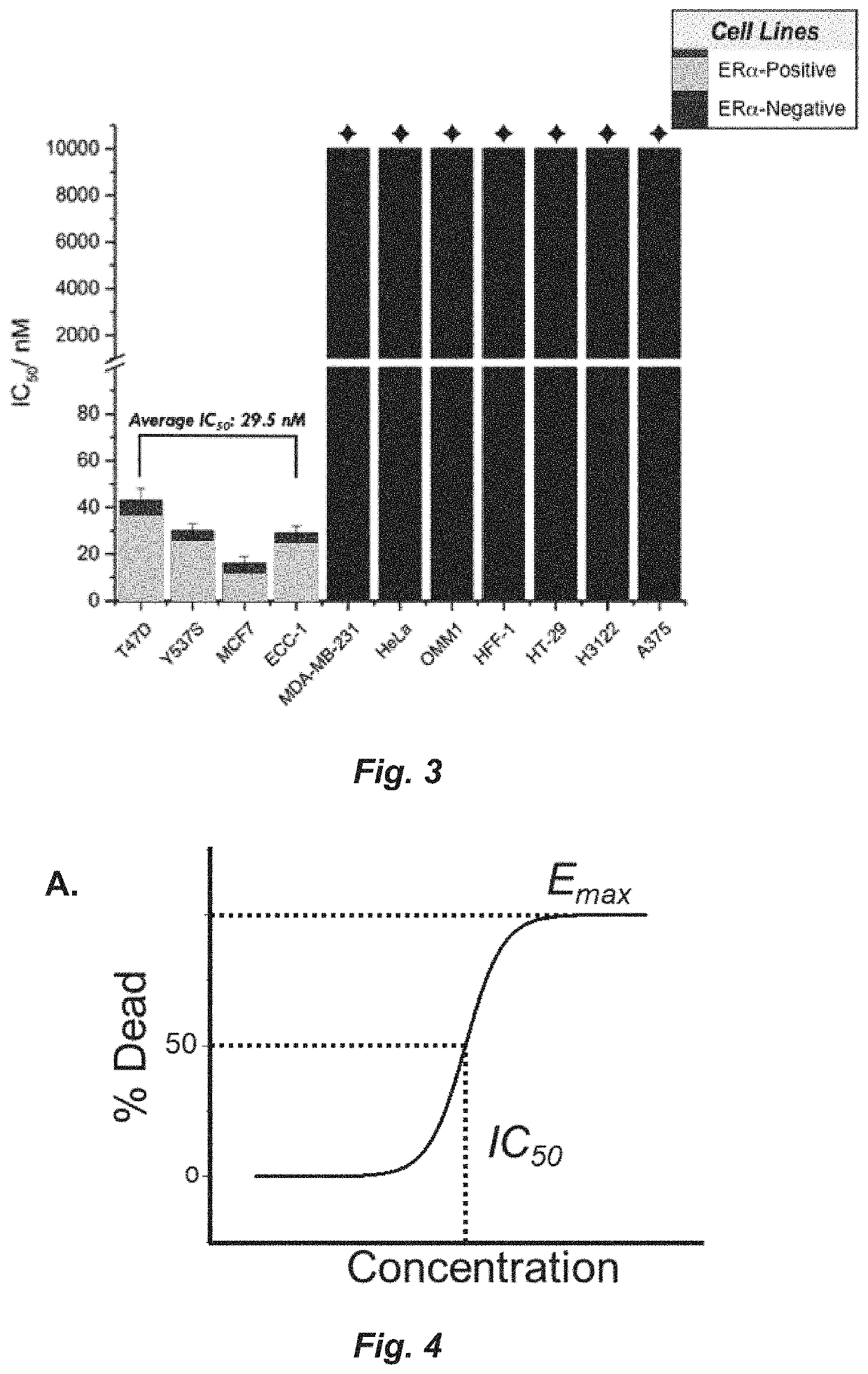Activators of the unfolded protein response
a technology of unfolded protein and activated protein, which is applied in the field of activated protein response, can solve the problems of allowing recurrent tumors to remain dormant and susceptible to reactivation, poor treatment options for recurrent tumors, and ineffective endocrine therapy, so as to improve the ability to kill, prevent recurrence, and increase the therapeutic potential
- Summary
- Abstract
- Description
- Claims
- Application Information
AI Technical Summary
Benefits of technology
Problems solved by technology
Method used
Image
Examples
example 1
Procedures
[0186]General Information: Unless otherwise stated, all reagents were purchased from commercial sources and used without further drying or purification. Solvents used herein were dried after being passed through activated alumina columns. All reactions were run in flame-dried glassware under a positive pressure of nitrogen gas. 1H NMR and 13C NMR experiments were conducted on a Bruker cryoprobe at 500 MHz and 188 MHz respectively. Spectra obtained in CD3OD were referenced for 3.31 ppm and 49.00 ppm for 1H and 13C NMR spectra respectively. NMR multiplicities are reported as: s=singlet, d=doublet, t=triplet, q=quartet, m=multi. 13C multiplicities are all singlets unless otherwise noted.
[0187]Procedure A: A round bottom flask was charged with desired phenyl bromide (3.08 mmol) and dissolved in THF (3.0 mL). The reaction mixture was cooled to −78° C. and a solution of n-BuLi (2.77 mmol, 1.7 mL) added dropwise over 10 minutes. The reaction was stirred for 1 hour. In another fla...
example 2
ll Death Studies of Compound 105
[0202]Experimental Details of the Xenografts: TYS-Luc cells (5,000,000 cells in Matrigel) were injected into the upper mammary fat pad of ovariectomized female NSG (SCID) mice (Jackson labs). After 10 weeks, on day 0, large tumors (size range: 100-600 mm3) were present. Mice were treated with the vehicle used to dissolve (−)-105, or (−)-105 at 40 mg / kd daily by subcutaneous injection. For bioluminescent imaging (BLI) of the tumors, the mice were anesthetized with isoflurane and Lucerfin, the luciferase substrate, was injected into the mice. Flux, the total member of light photons hitting the detector in one second was measured using an IVIS (In Vitro Imaging System). Shown is the flux (in millions of units per second) for the entire area containing each tumor, or an equivalent area when the tumor is tiny or undetectable and the per cent change in tumor size at each time a measurement was taken (day 0, day 3, week 1, week 2, week 3). Then treatment was...
example 3
l Data for Compounds Related to 105
[0222]FIG. 24 shows a comparison of the ability of test compounds and BHPI to kill TDG cells. TDG cells were incubated for 24 hours with 75 nM of BHPI or 75 nM of each of the indicated test compounds: 4, 6 and (±)-105 (enantiomers not separated). Cell death was determined using the instrument-based Trypan Blue exclusion assay. Structures are in the Synthesis section. Conclusion: Compared to BHPI, compounds 4 and 105 exhibit a greatly increased ability to kill the TDG cells. (n=3±SEM).
[0223]FIG. 25 shows a comparison of the ability of test compounds and BHPI to kill TYS cells. TYS cells were incubated for 24 hours with 35 nM of BHPI or 35 nM of each of the indicated test compounds: 2, 4, and 105. Cell death was determined using the instrument-based Trypan Blue exclusion assay. (n=3±SEM), Thus, compared to BHPI, compounds 4 and 105 exhibit a greatly increased ability to kill the TYS cells.
[0224]FIG. 26 shows a comparison of the ability of test compou...
PUM
| Property | Measurement | Unit |
|---|---|---|
| temperatures | aaaaa | aaaaa |
| temperature | aaaaa | aaaaa |
| temperature | aaaaa | aaaaa |
Abstract
Description
Claims
Application Information
 Login to View More
Login to View More - R&D
- Intellectual Property
- Life Sciences
- Materials
- Tech Scout
- Unparalleled Data Quality
- Higher Quality Content
- 60% Fewer Hallucinations
Browse by: Latest US Patents, China's latest patents, Technical Efficacy Thesaurus, Application Domain, Technology Topic, Popular Technical Reports.
© 2025 PatSnap. All rights reserved.Legal|Privacy policy|Modern Slavery Act Transparency Statement|Sitemap|About US| Contact US: help@patsnap.com



